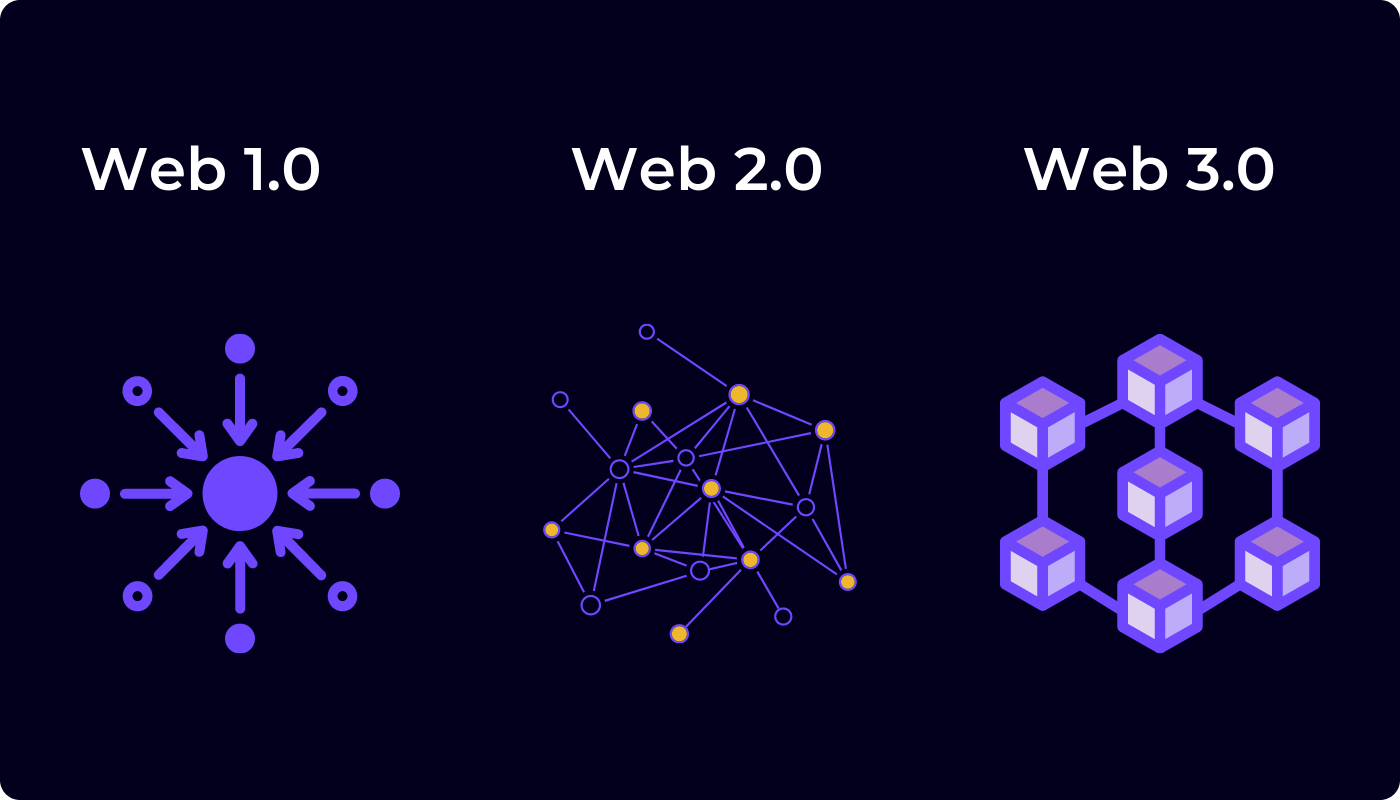| Feature | Web (1.0) | Web2 (2.0) | Web3 (3.0) |
|---|---|---|---|
| Content | Read-only | Read-write, user-generated | Read-write, interactive, decentralized |
| Data Ownership | Platforms or organizations | Users | Users |
| Control & Access | Centralized, limited access | Centralized, platform-dependent access | Decentralized, open access |
| Technologies | Static HTML, basic internet protocols | Dynamic websites, social media platforms, APIs | Blockchain, tokenization, smart contracts |
| User Interaction | Limited, passive consumption | High, participatory, content creation | Semantic web, personalized experiences, AI-powered interactions |
| Privacy & Security | Low, data easily accessible | Moderate, privacy concerns due to centralized data storage | High, data control and encryption through blockchain |
| Examples | Static websites, early email, online directories | Social media platforms, blogs, video-sharing websites, e-commerce | Decentralized applications (dApps), DAOs, NFT marketplaces, semantic web |
| Current State | Legacy, mostly surpassed by Web 2.0 | Dominant, present in most online experiences | Early stages, evolving rapidly, many concepts still theoretical |
